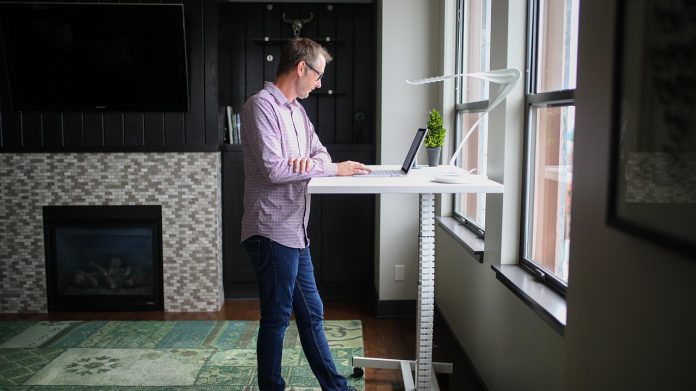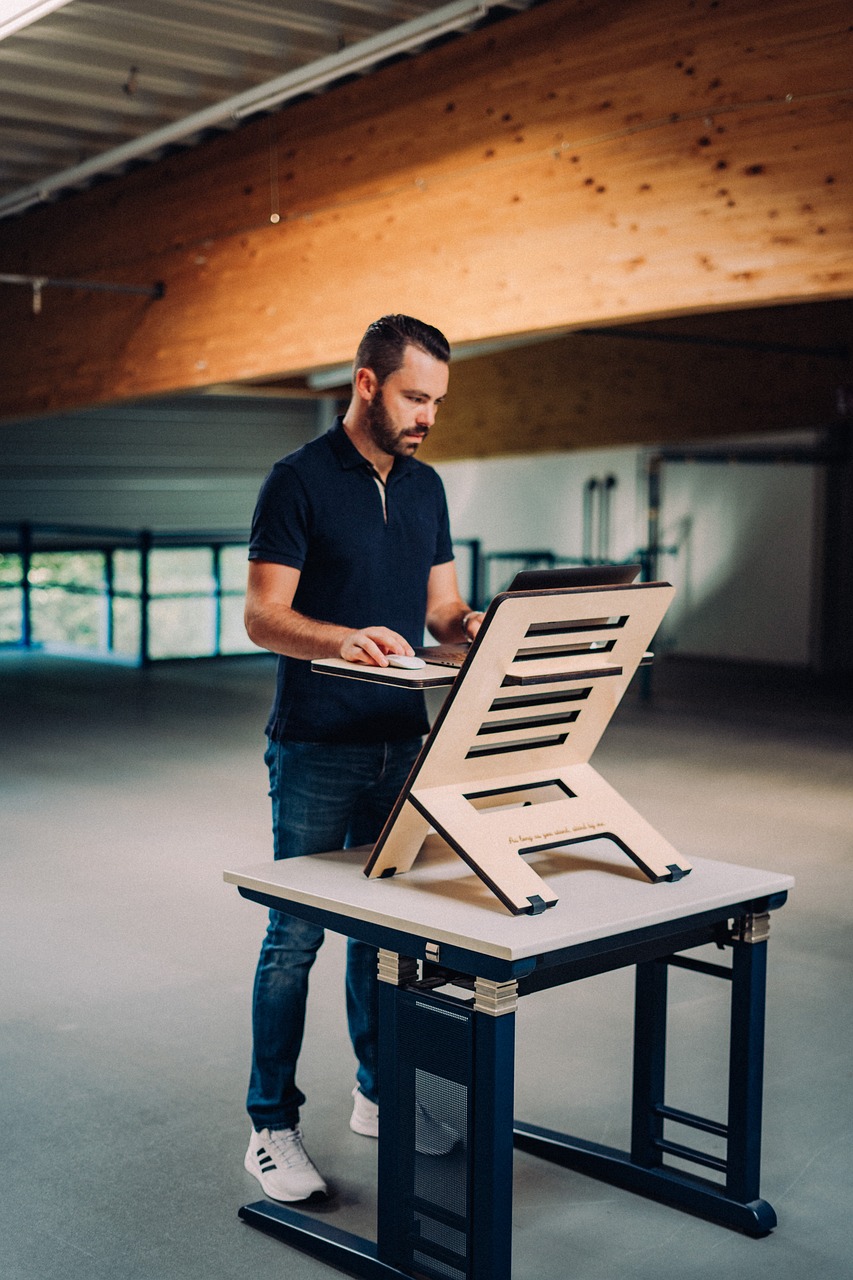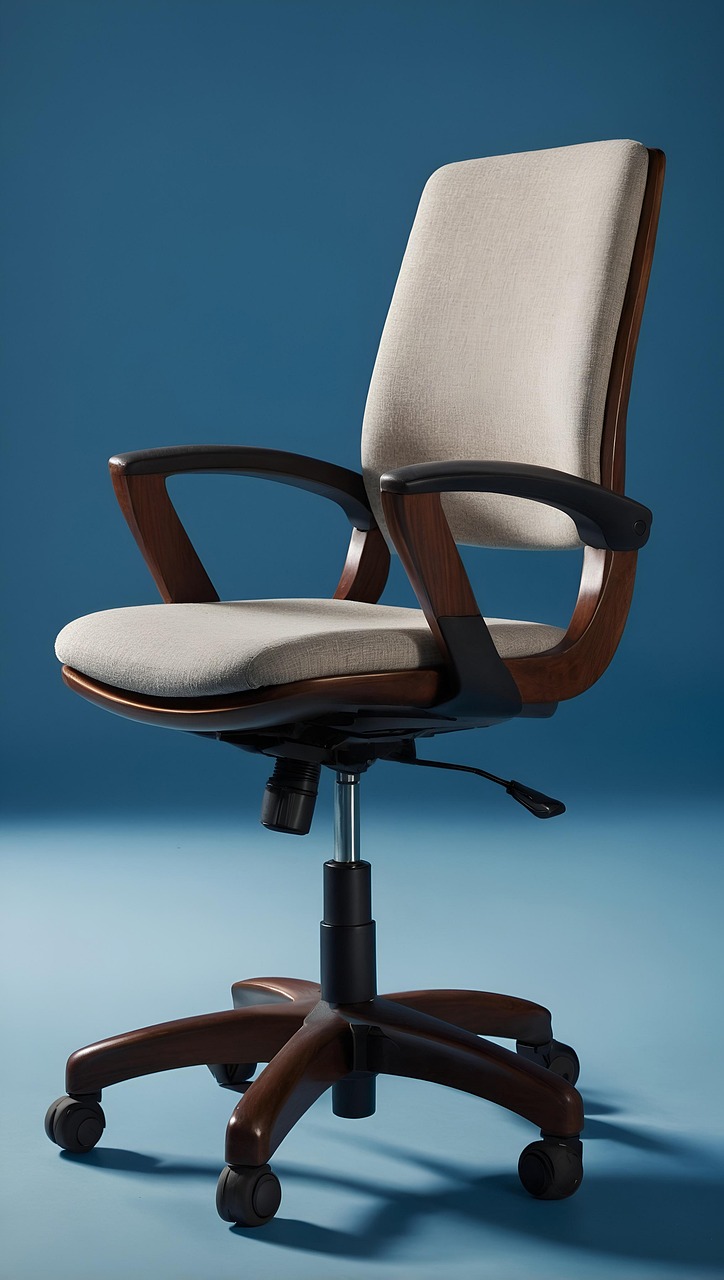Want the best small standing desks for home offices and tight spaces? Read on to find out.
Grab a tape, set a timer for ten minutes, and map the real space. Measure from the corner to the first obstacle on each wall – window trim, heater covers, door swing, a floor vent you can’t block.
Note usable depth from the front edge of the planned work zone to the wall; many flats give you barely 60–65 cm before knees hit a sill. Mark the footprint with painter’s tape and roll your chair into it. Sit as you work for an hour, not as you think you sit. If your elbows flare or your neck leans, the desk height or screen line is off. These checks keep you from buying a pretty slab that eats daylight and crowds your hips.
When the outline feels right, check the back edge of your current top. A thick bullnose can fight a clamp, and a shallow overhang can trap cables. If depth is tight, a compact top with a center cutout gives elbows room while keeping the screen close. This is where you shortlist options rather than guess.
Browse a well-sorted range and look for a base that moves smoothly with your load; a clean place to start is a catalog that clarifies stroke, lift, and presets around what people actually use – think two honest heights, sit and stand – when you search for best standing desk. Match width to your wall span and leave a hand’s width of walkway on the busy side.
Table of Contents
Layouts that rescue square footage
Think triangle, not line. Put the chair in the pocket, center the main screen, and park support gear on the side you glance at most – usually your mouse side. A shallow arm with a laptop tray keeps the footprint compact and flips aside for paper work.
If glare from a window nags you, shift the desk a hand’s width off-center and tilt the panel slightly back. A slim 24–27″ monitor with a shallow stand sits far enough back to open elbow room. One power strip under the rear edge keeps lines tidy; one heavy cord goes to the outlet you can reach without crawling.
If the space is truly tight, a compact frame earns its keep by doing the simple things well: smooth lift, quiet start and stop, and a top that fits the wall without awkward gaps. A smart pick in this class is a small standing desk – a short-depth build that lines up with narrow rooms, lets you set two presets, and leaves room for a chair to roll in cleanly.
The trick is to set the chair first (feet flat, hips a touch above knees), then bring the surface to your arms. Your forearms should rest level, wrists straight, shoulders quiet. Save both heights as presets so you switch without fuss.
READ ALSO: Top Factors to Consider Before Switching to Cable Internet
Cable, power, and heat: one calm path
Cables behave when they have a single spine, strain relief at both ends, and slack where motion happens. Mount a short bar under the wing on the outlet side; feed the dock and screen from it; send one surge-protected line to the wall. Leave a gentle loop near any arm joint so plugs don’t pull when you stand.
Label the leads that matter – power, video, upstream – so you can rebuild the hookup after a clean in two minutes. If your laptop drives two high-refresh panels, give it air from below: a vented tray or rubber feet reduce fan noise. If the rear edge touches a wall, stick felt dots there to kill the faint hum you notice on late calls.
Good light lifts the whole room. Aim a small lamp at the wall for bounce during video calls; the camera read improves, and eyes relax. Keep a microfiber cloth in the top drawer and wipe the screen once a week; dust dulls contrast and traps heat. These small habits protect the quiet you need to think, which is the point of the upgrade in the first place.
Ergonomics you’ll keep using
Set the main screen so the top third sits at eye line, then tilt it a few degrees back. If you use progressives, drop the panel slightly so your neck stays neutral. Keep the keyboard centered to the screen and the mouse close enough that your elbow rests by your ribs. If you stand part of the day, hold the same geometry: elbows near 90°, shoulders level, weight through your heels, not your toes.
For long writing blocks, add a soft mat underfoot; it reduces fidgets and keeps calves relaxed. Set a simple timer – fifty minutes on, five off – to reset posture and eyes. Small breaks help more than hero sessions when space is tight and light is fixed.
If you share the desk, give the other person a preset. Two taps beat fiddling during a call. Lock the heavy gear – amp, big books – over a leg, not mid-span. Protect mug zones with a thin mat you like; you will use it, and the top will age well. These are simple, repeatable moves, and they add up to a room that feels kinder on busy days.
Buying notes that prevent returns
Measure wall legs from the corner to every obstacle – radiators, trims, outlets that sit high. Check wing depth; some tops look sleek online but push screens forward in real rooms. If you plan to clamp an arm, confirm the back edge allows it; thick rounded edges can fight common clamps.
Weight ratings matter, but range matters more – pick a base that moves smoothly with your real load. A durable laminate beats soft wood if you write by hand or run a mouse without a pad. Read the assembly sheet before you buy: labeled bags, pre-drilled holes, and clear steps tell you how painless the build will be in a small room with parts laid out on the floor.
Give yourself one fast win on day one. Route power to the outlet side, set two presets you will actually use, and move on. Put pens and the one charger you trust on the non-mouse wing. Keep the chair path clear; if a bin lives under the wing, add sliders so it glides out with one hand. On Friday, square the keyboard to the screen, coil the one cable that drifted, and wipe the corner. Monday will thank you.
Make it future-proof without filling the room
Work changes – more calls, a second panel, a new laptop with different ports. Pick parts that survive those shifts. A base with a broad height range covers sneakers and dress shoes, tall days and tired days. A top with flexible holes lets you rotate or swap without drilling fresh wood in a rental.
Arms with decent tension range adapt to lighter or heavier screens; trays with open sides won’t block new ports. Keep a tiny stash – clips, one spare HDMI, a Velcro strip – so fixes take minutes. The goal is simple: a desk that feels roomy, a screen you can look at for hours, and a layout that stays quiet. When the gear fades into the routine – no wobble, no cable tug – you’ve nailed it.
INTERESTING POSTS
- Role Of The Internet During The Times Of Pandemic
- Tips For Keeping Your Server Room Safe And Secure
- 9 Things That Every Gamer Should Have For Seamless Online Gaming
- Top 8 Cybersecurity Companies In Dubai
- 5 Software Tools to Help You Improve Your Business Processes
- Reasons To Use Data Tape Media For Your Business
- Scraping At Scale: The Metrics That Keep Pipelines Honest
About the Author:
Amaya Paucek is a professional with an MBA and practical experience in SEO and digital marketing. She is based in Philippines and specializes in helping businesses achieve their goals using her digital marketing skills. She is a keen observer of the ever-evolving digital landscape and looks forward to making a mark in the digital space.








